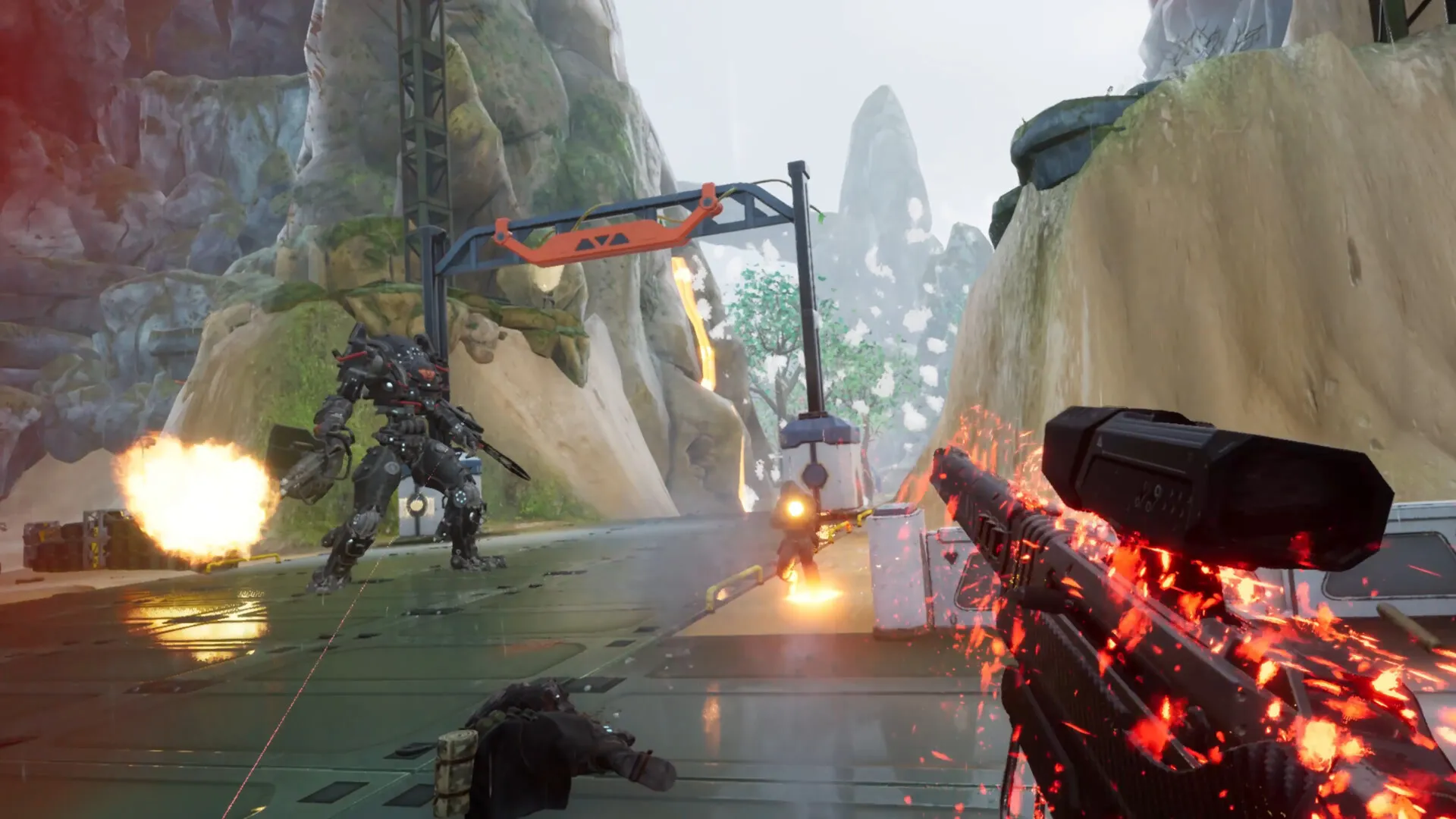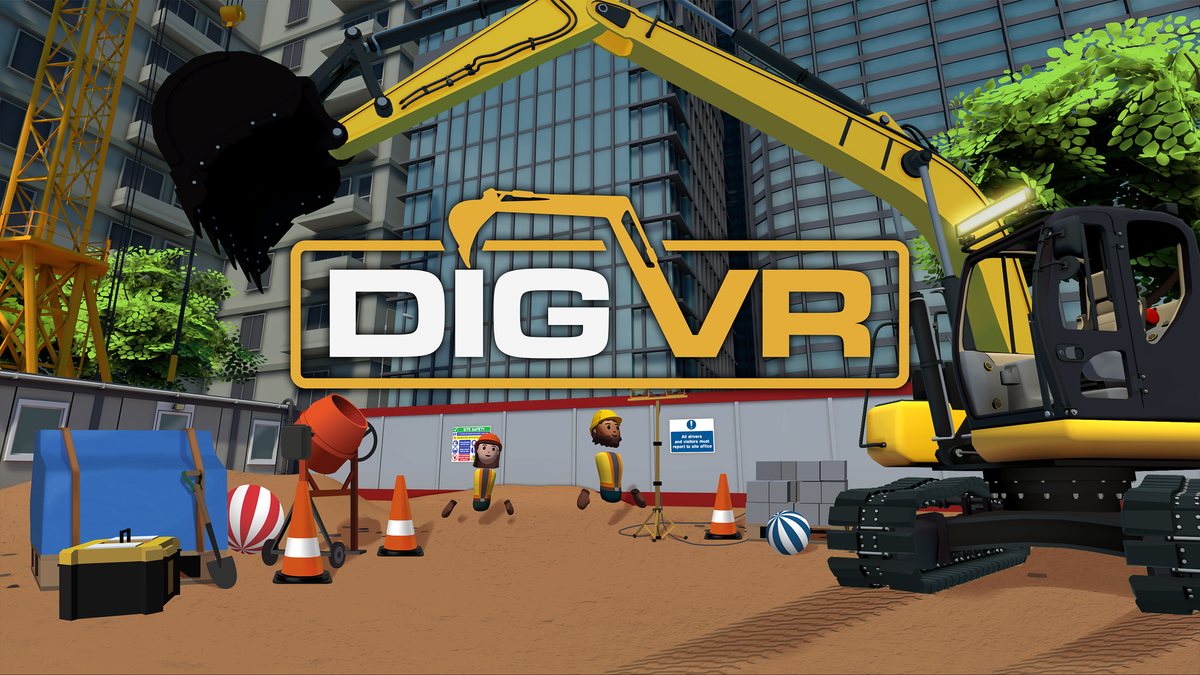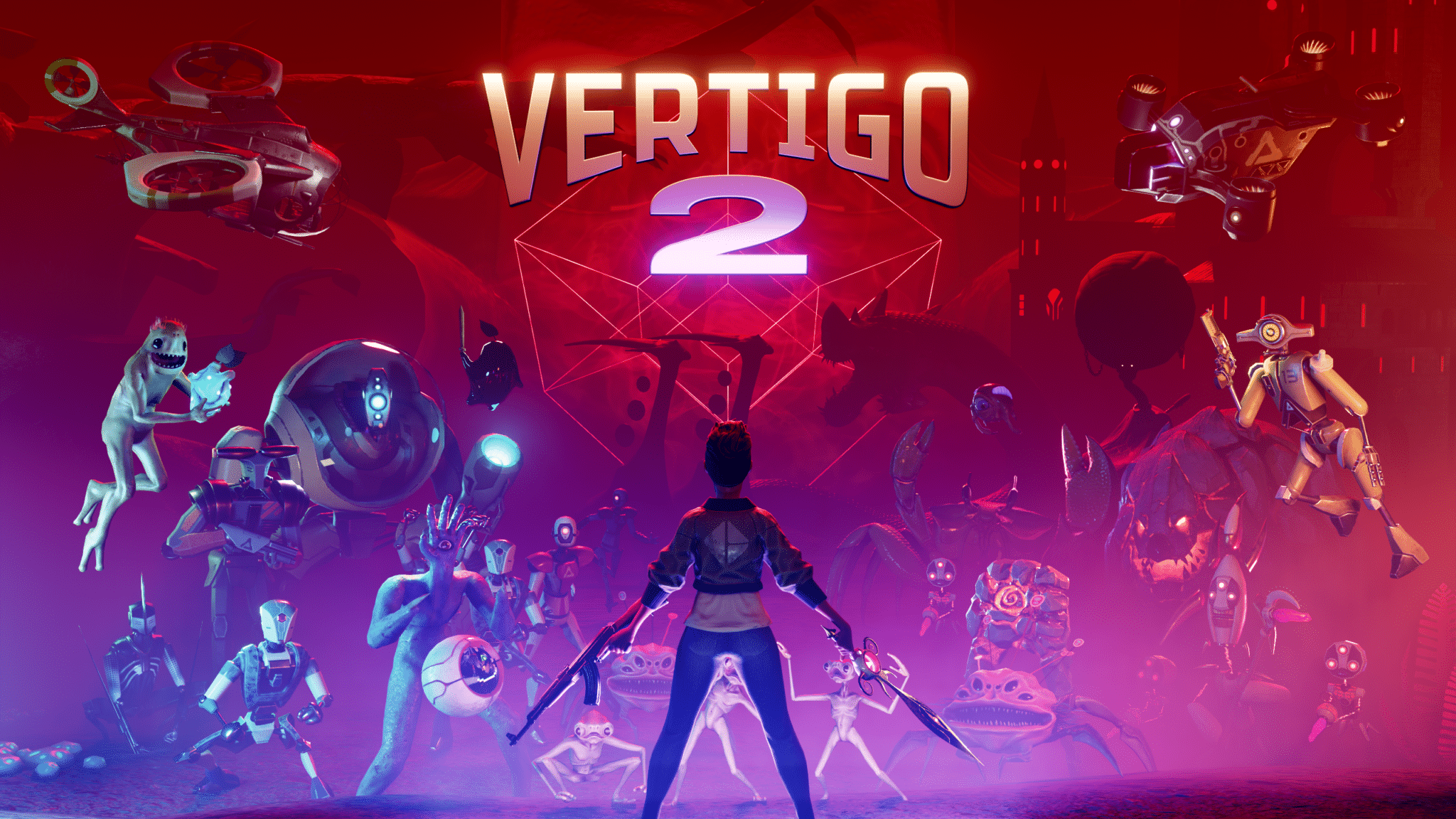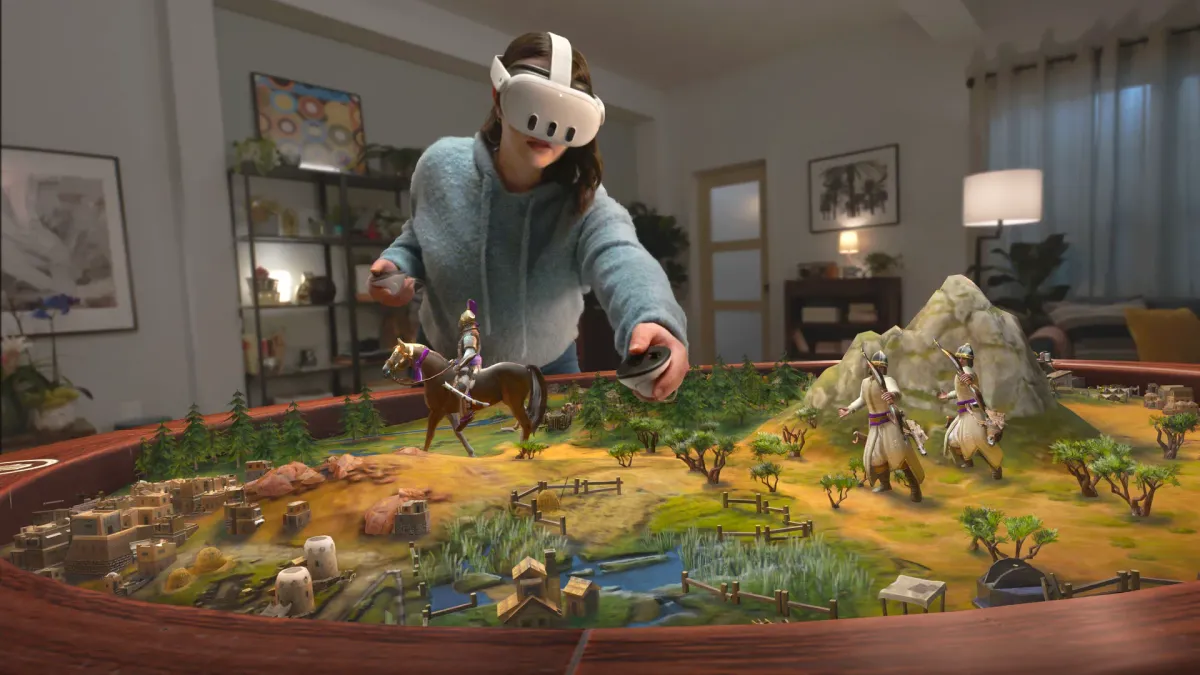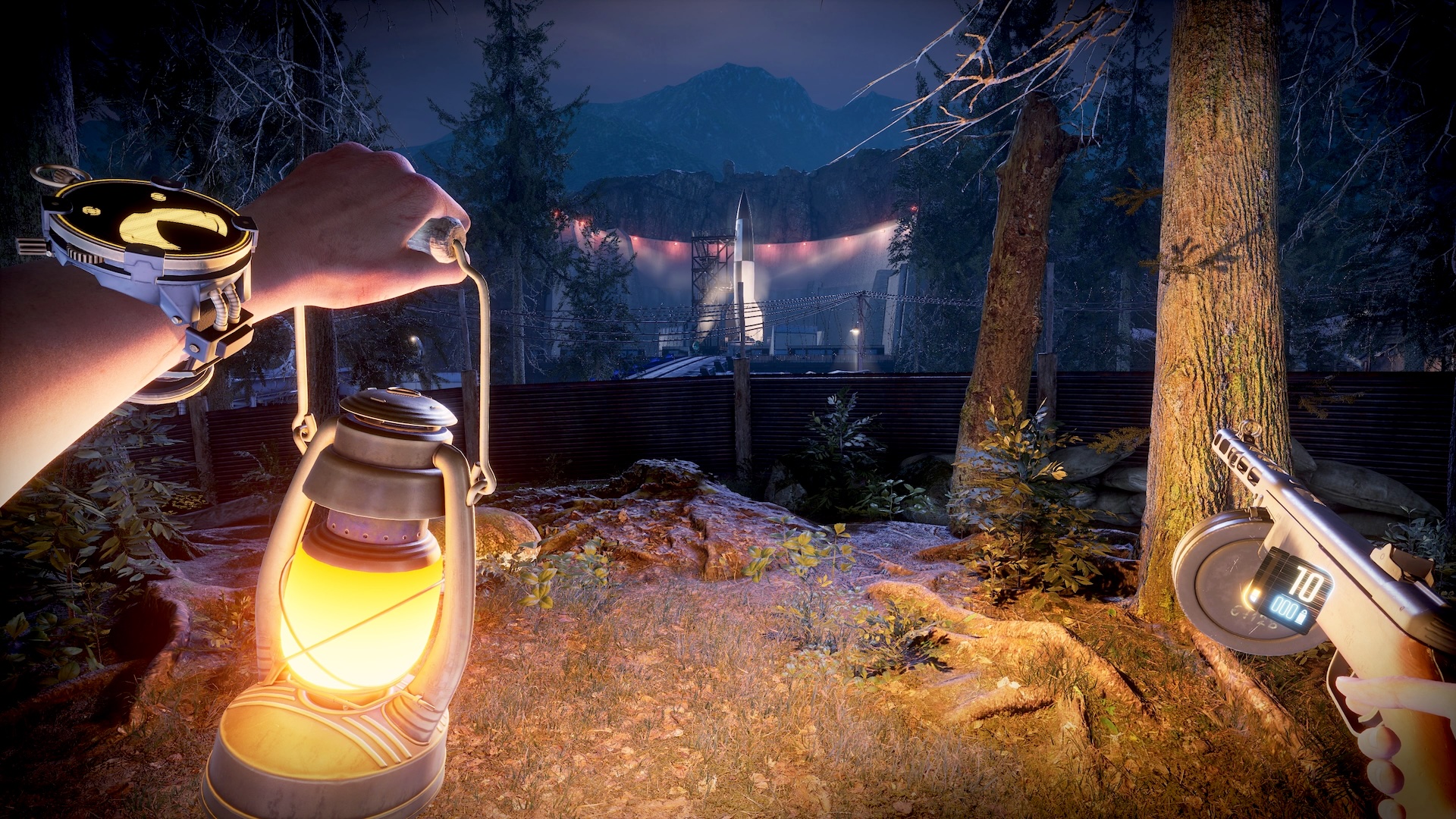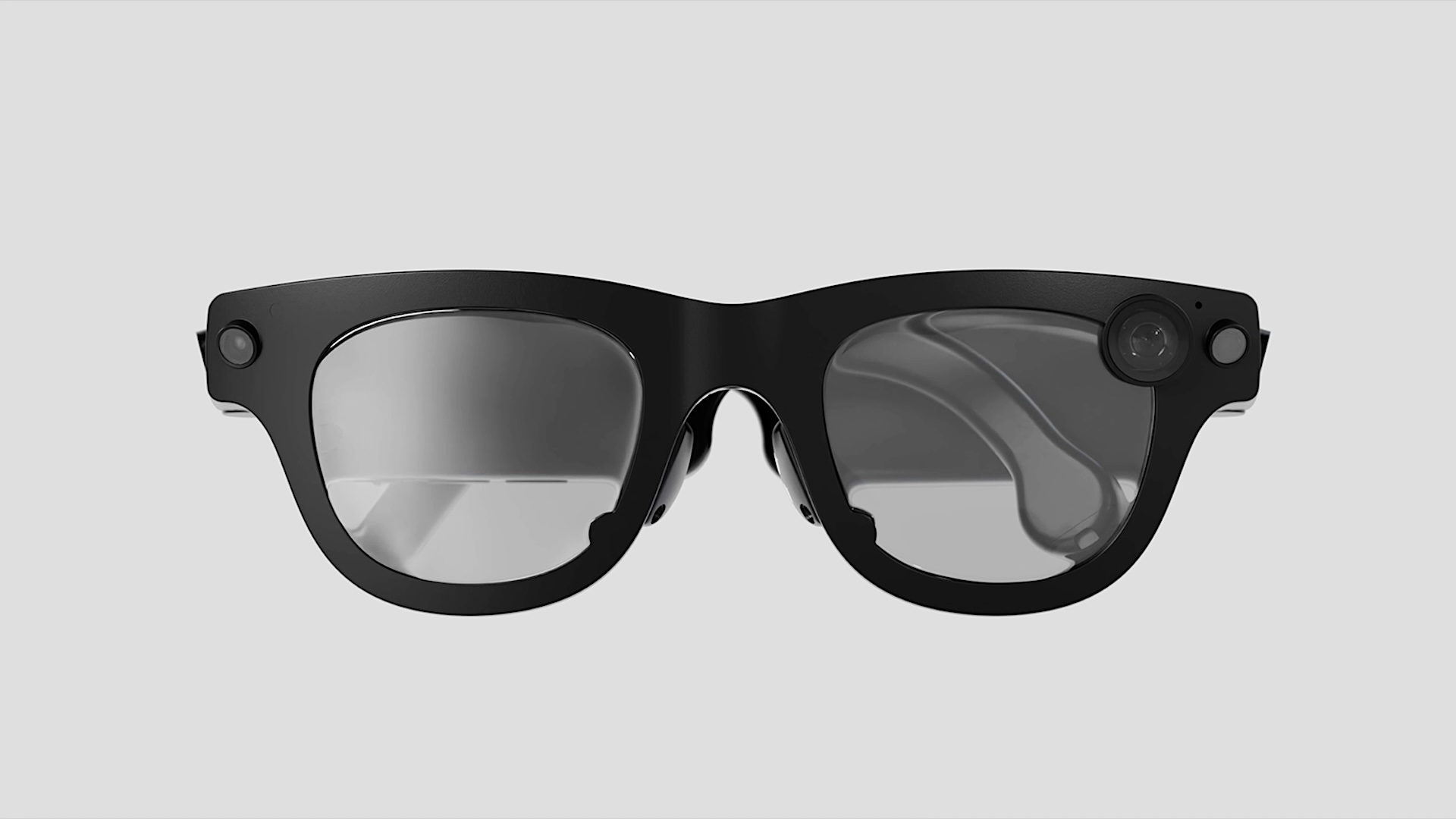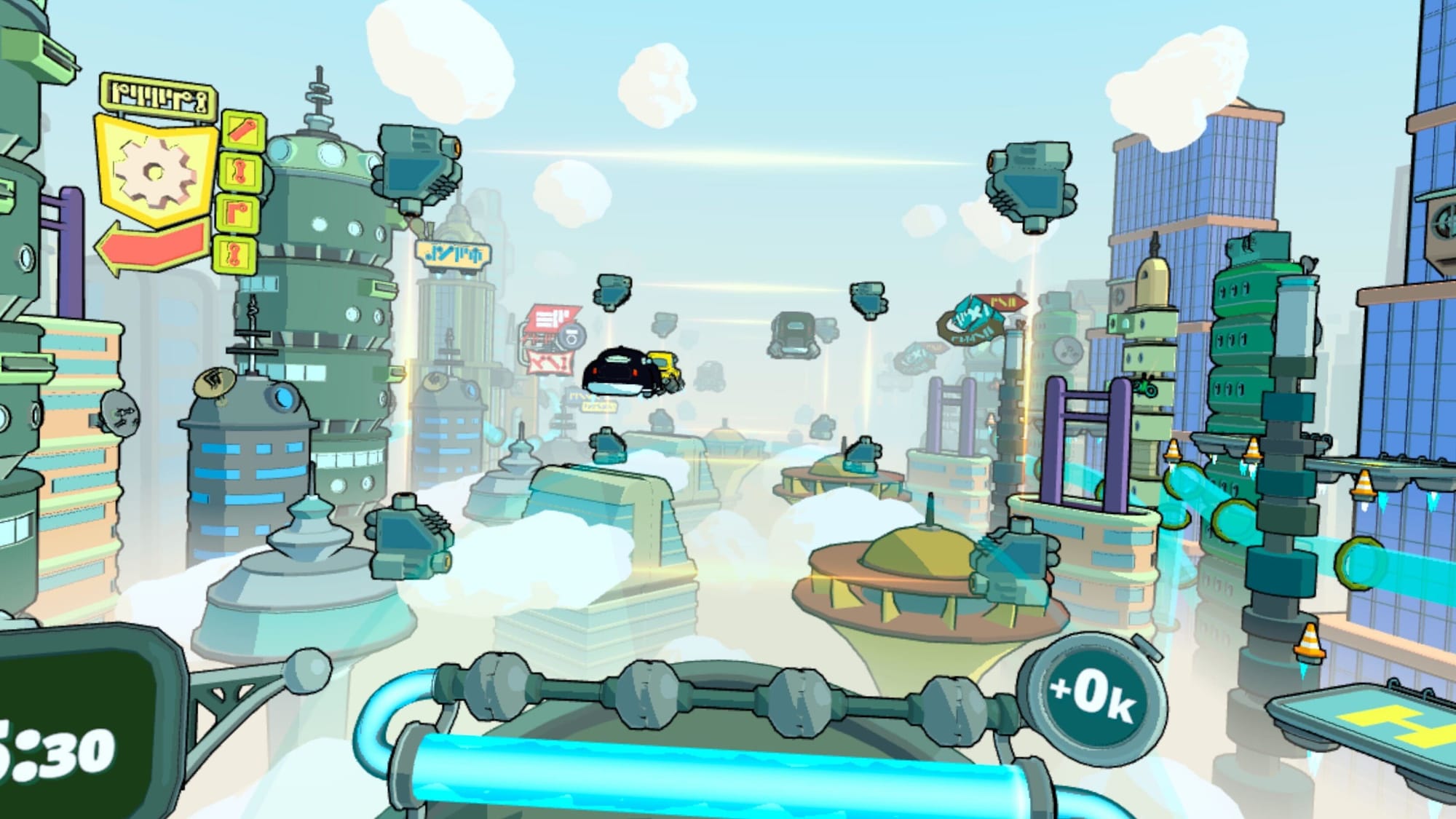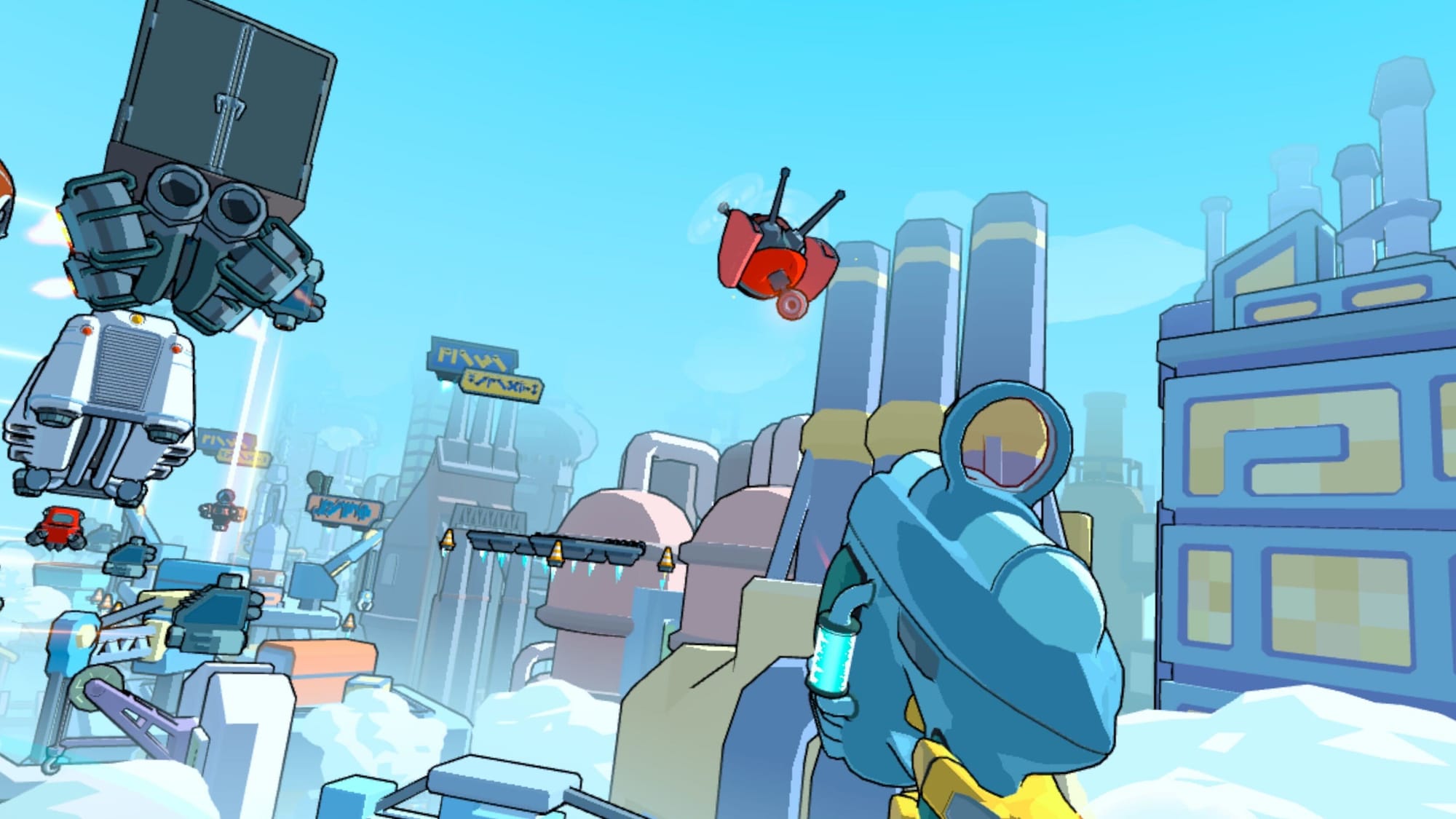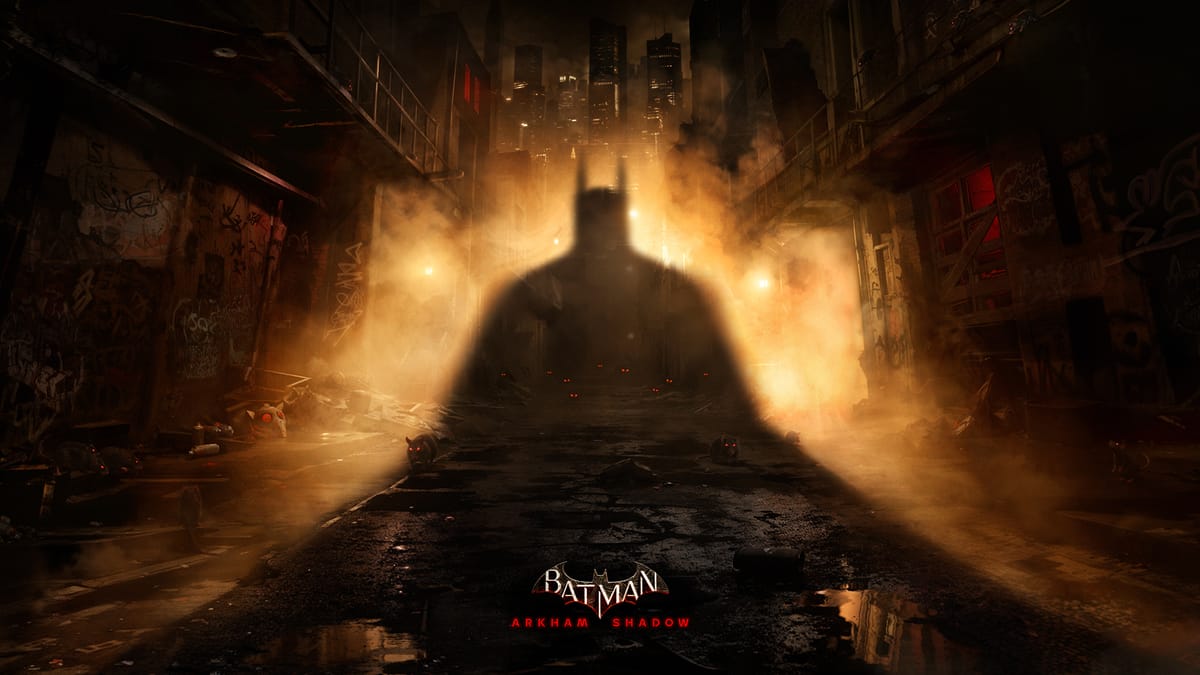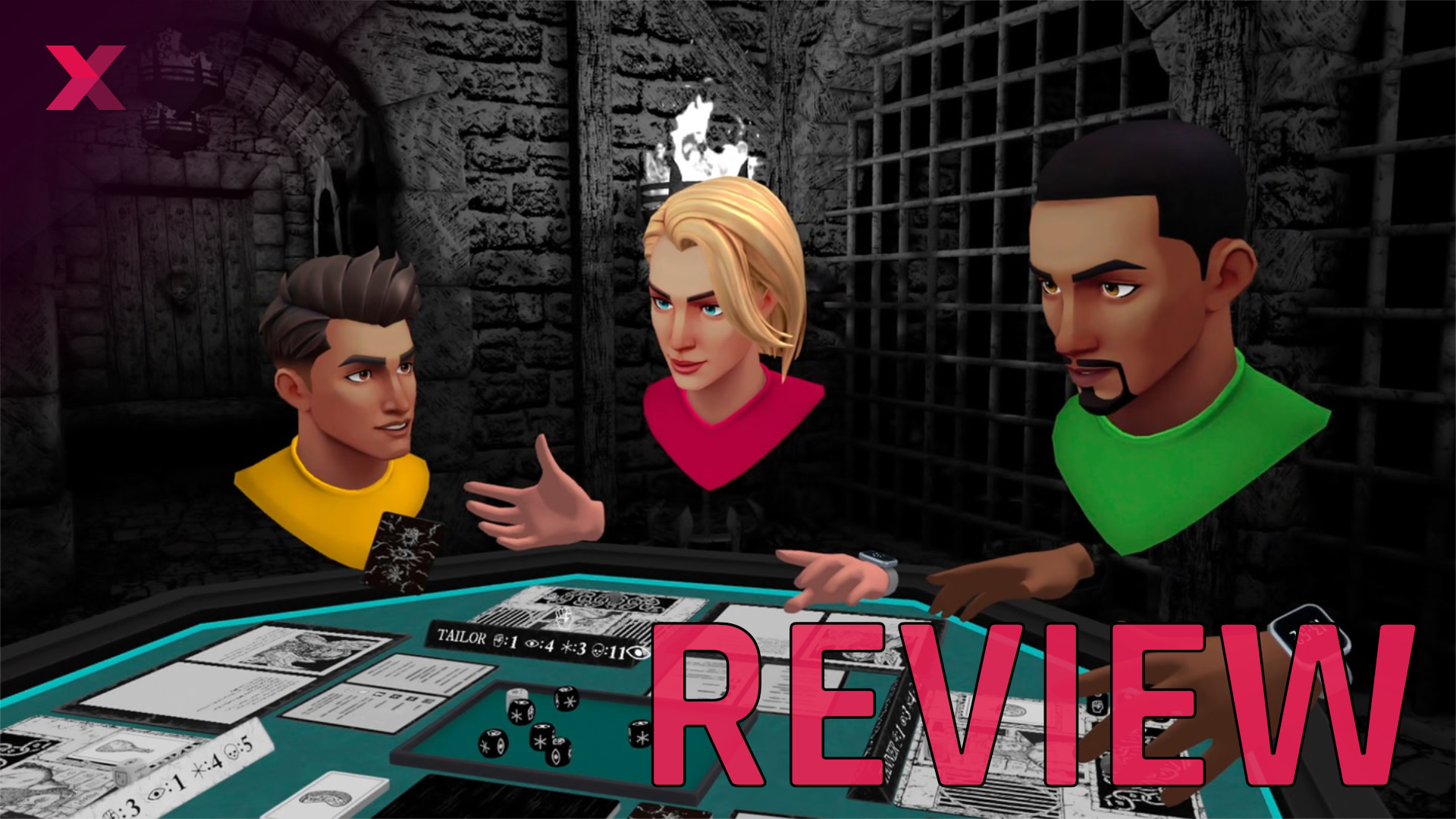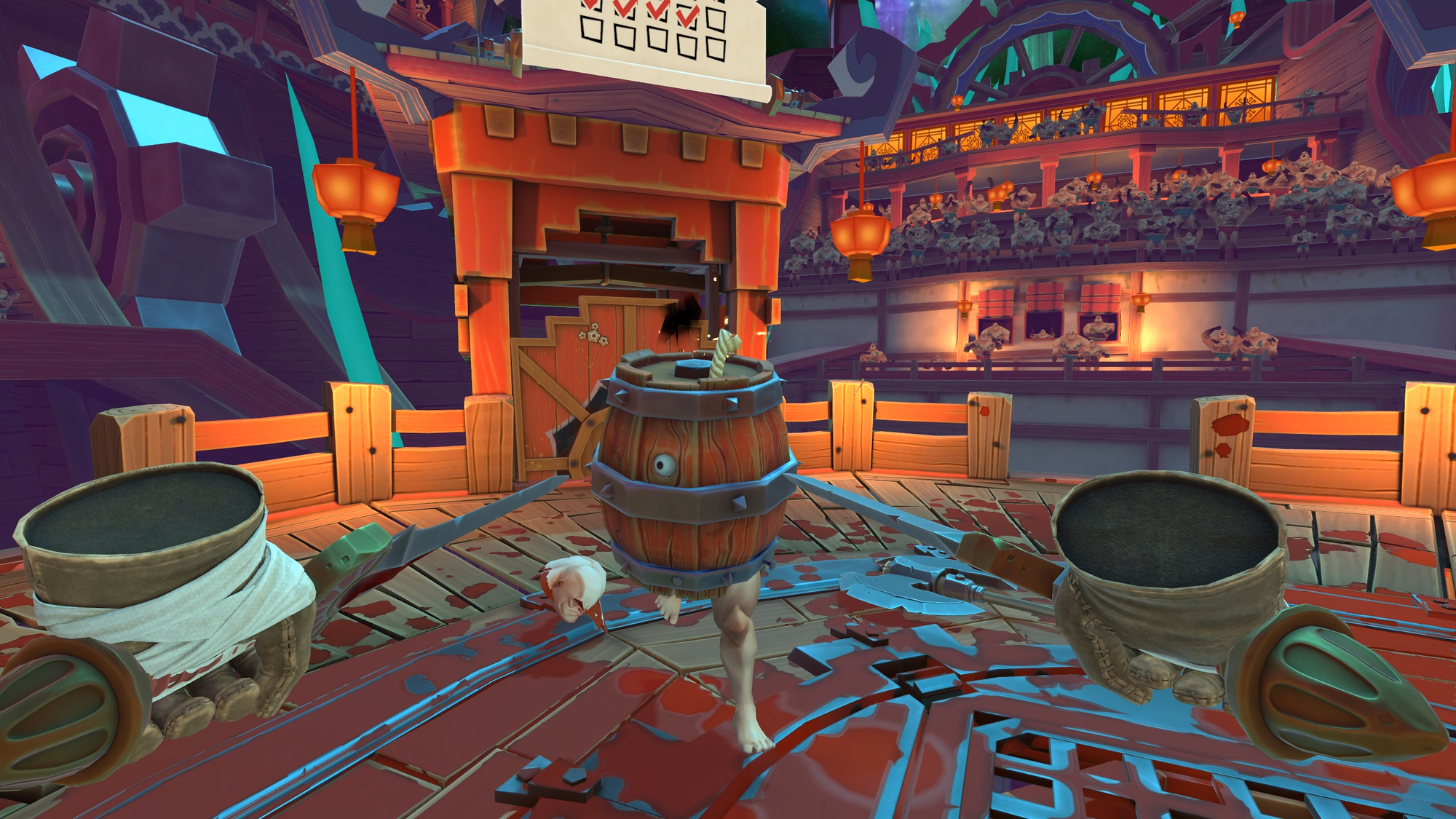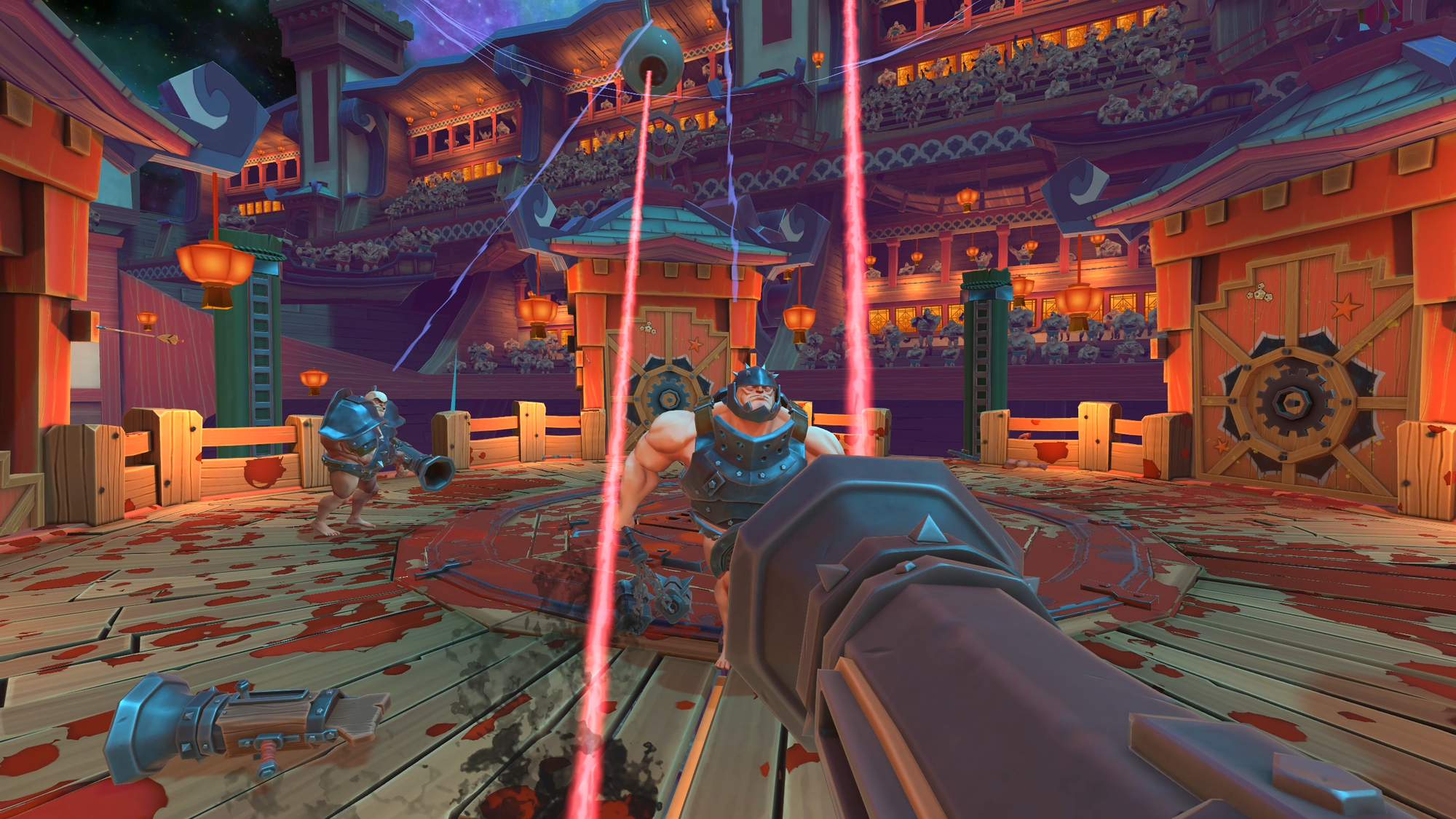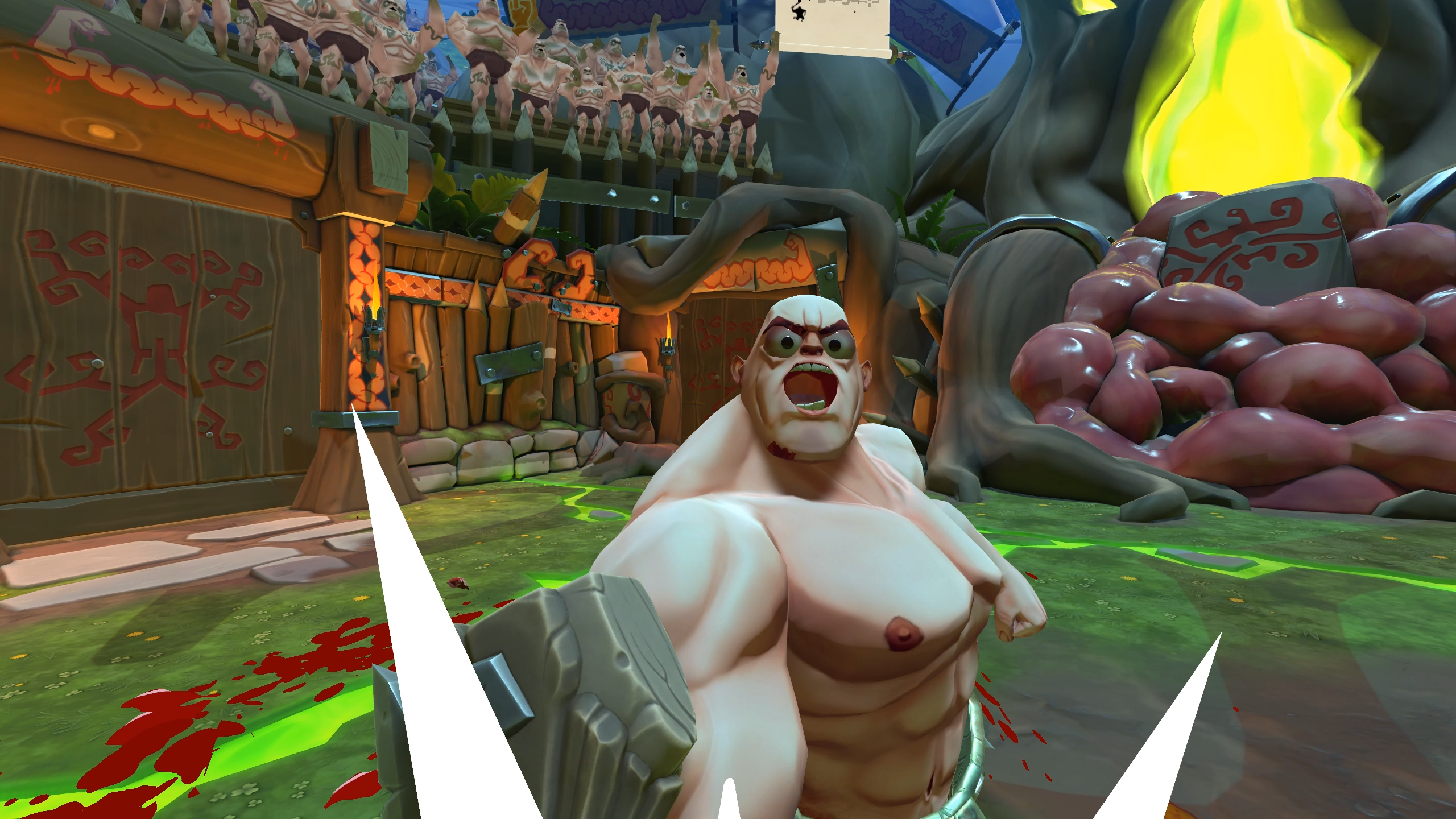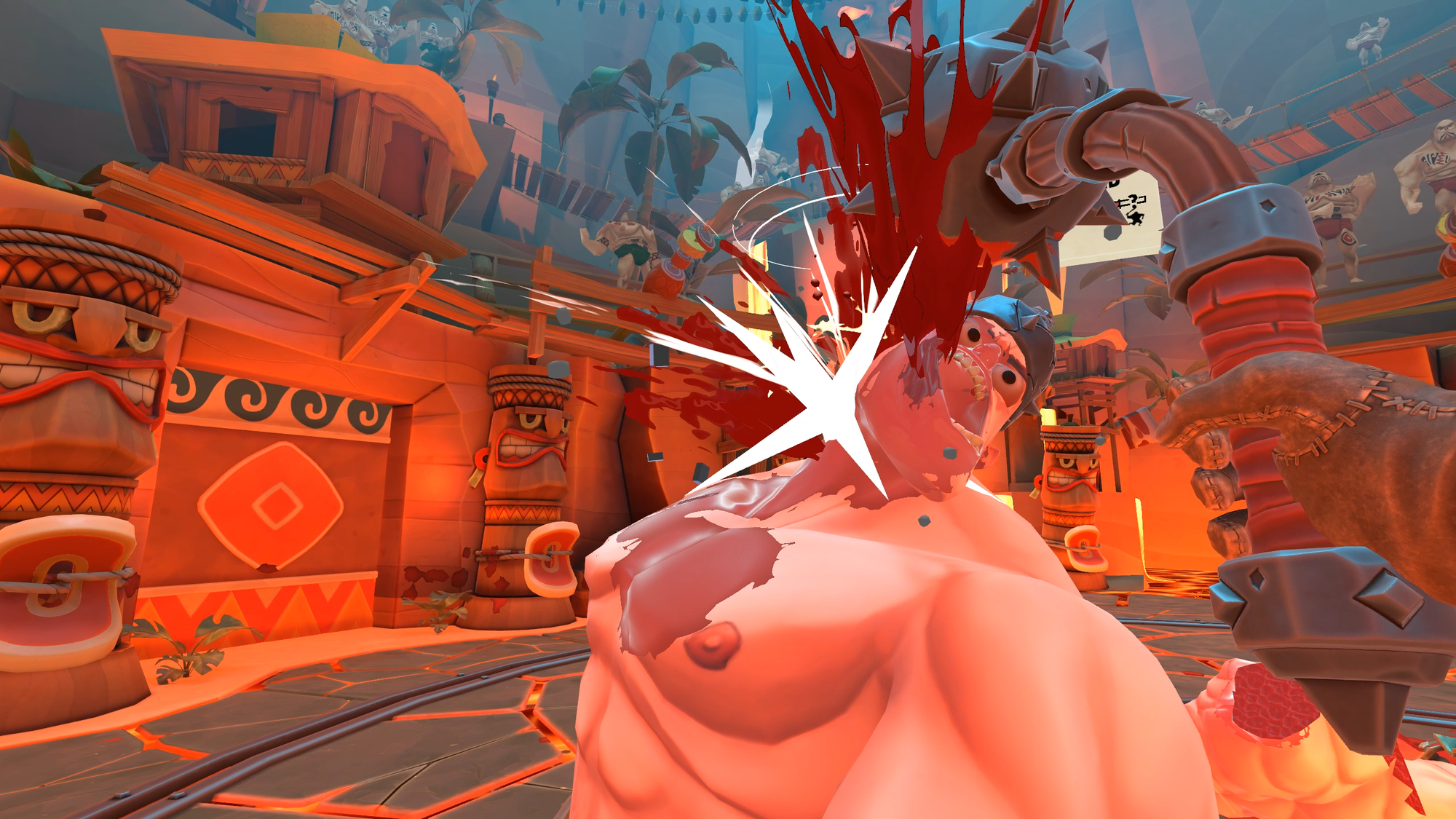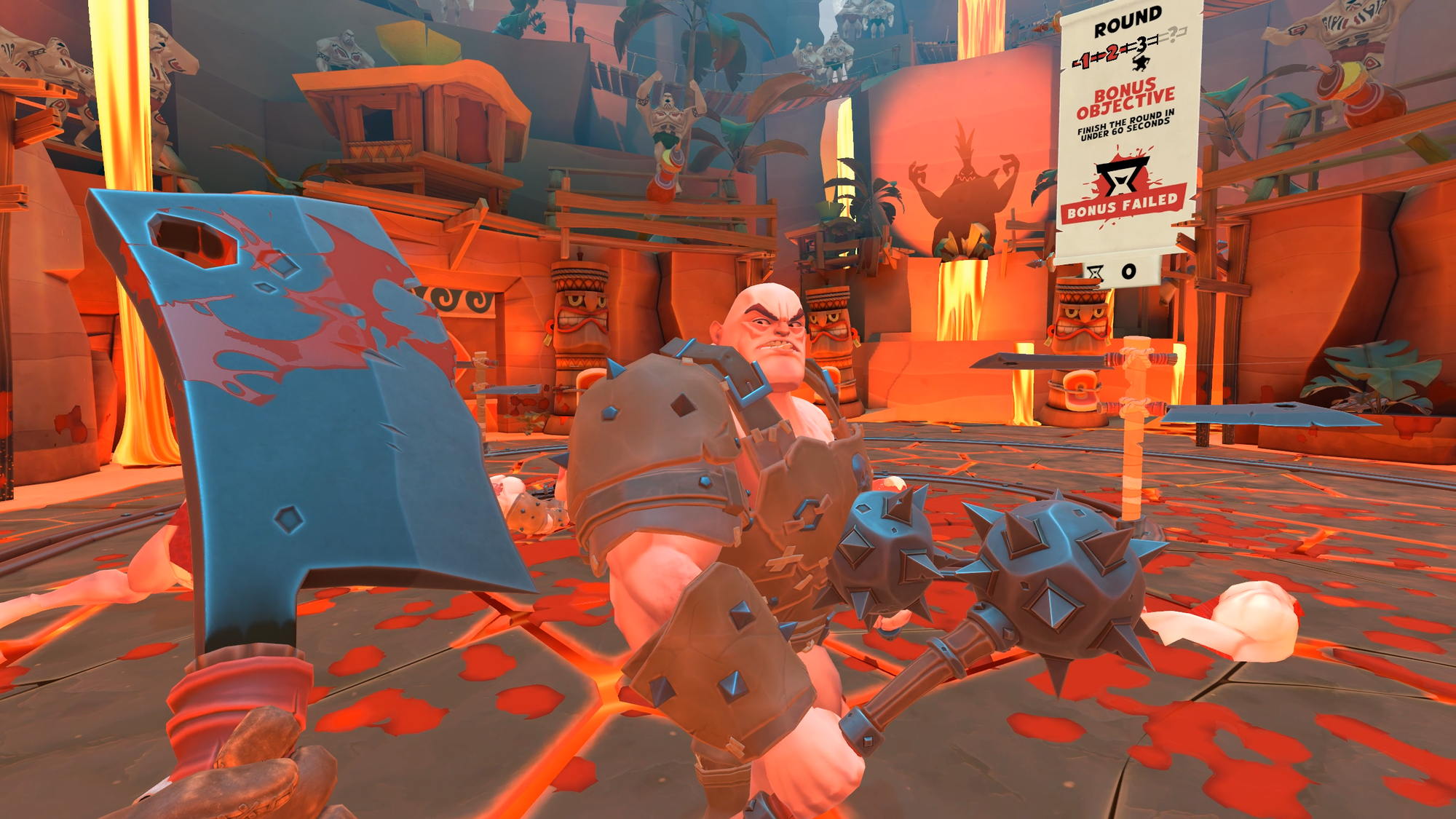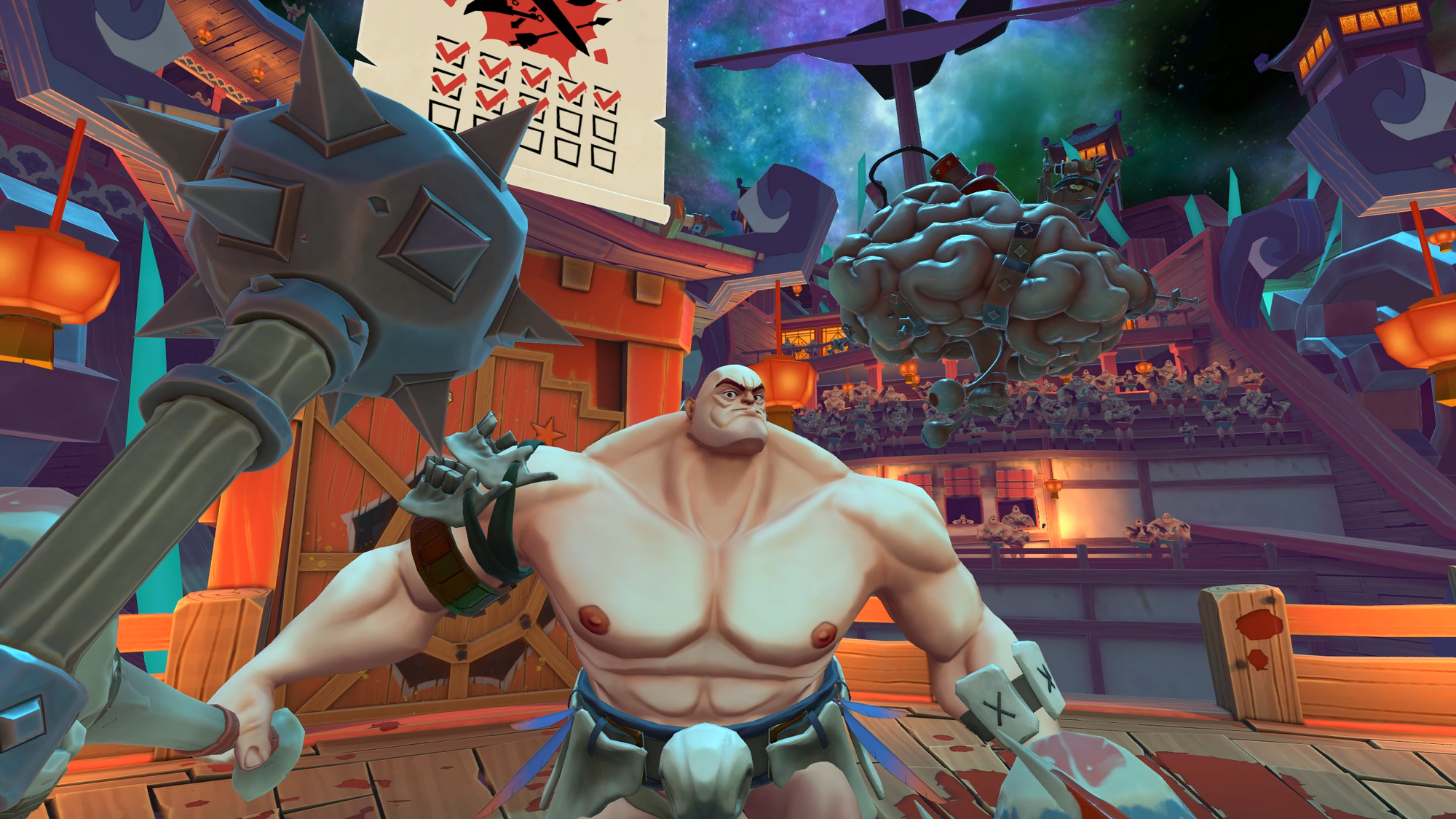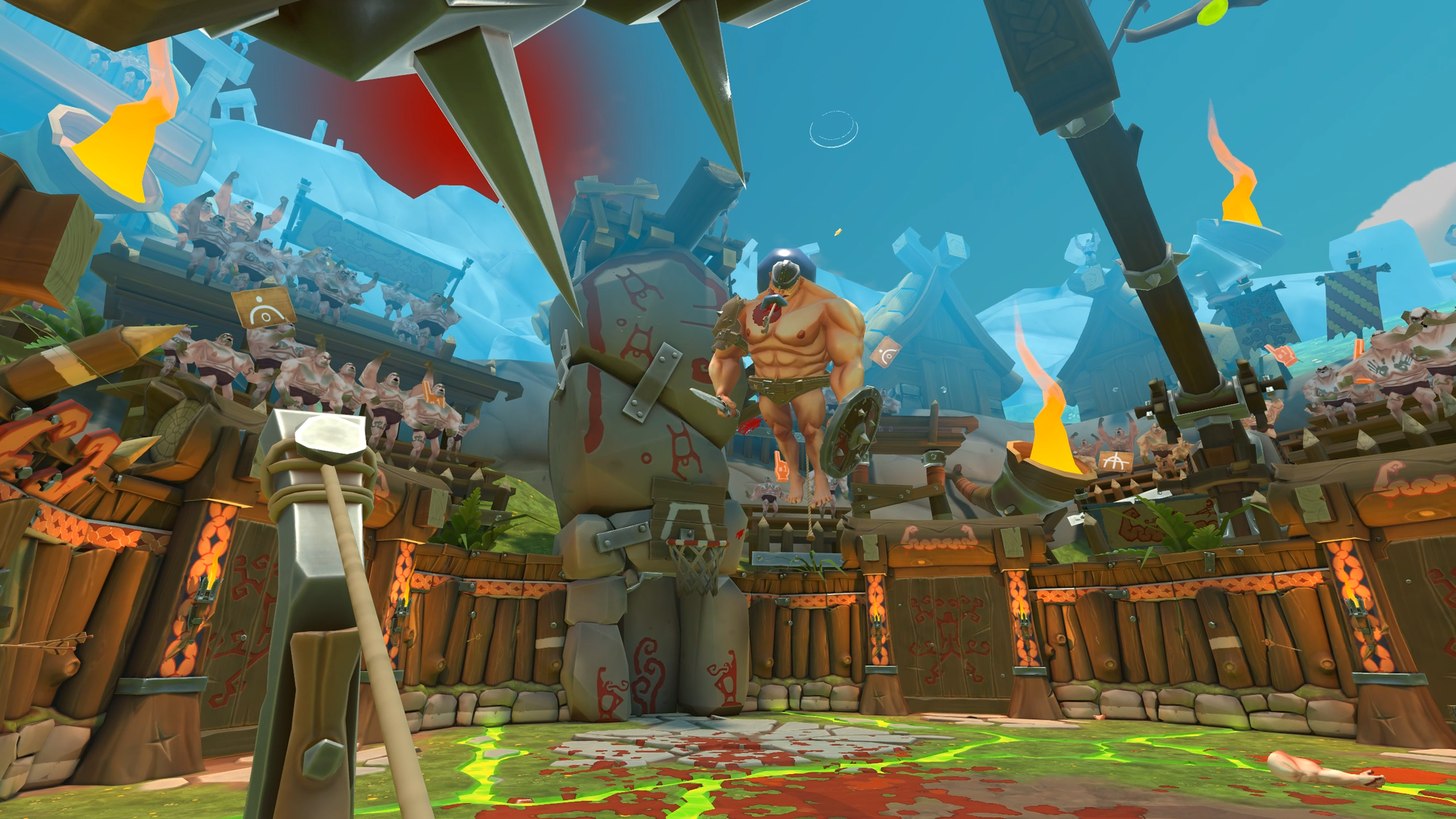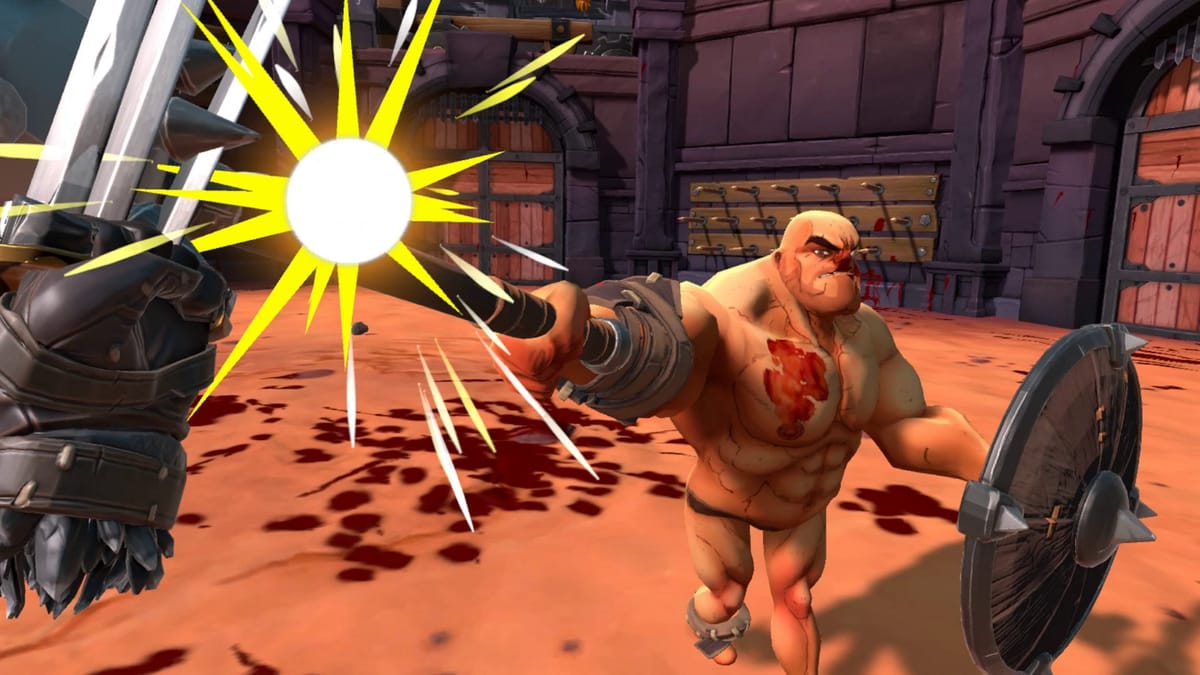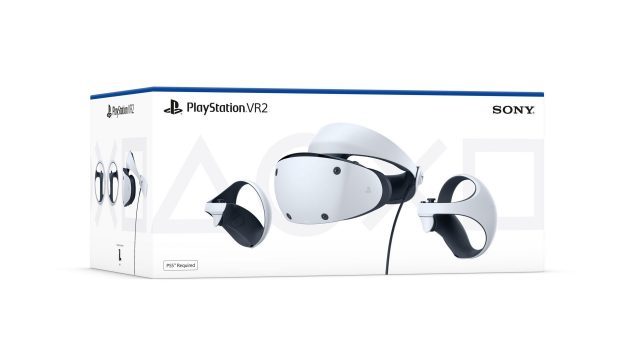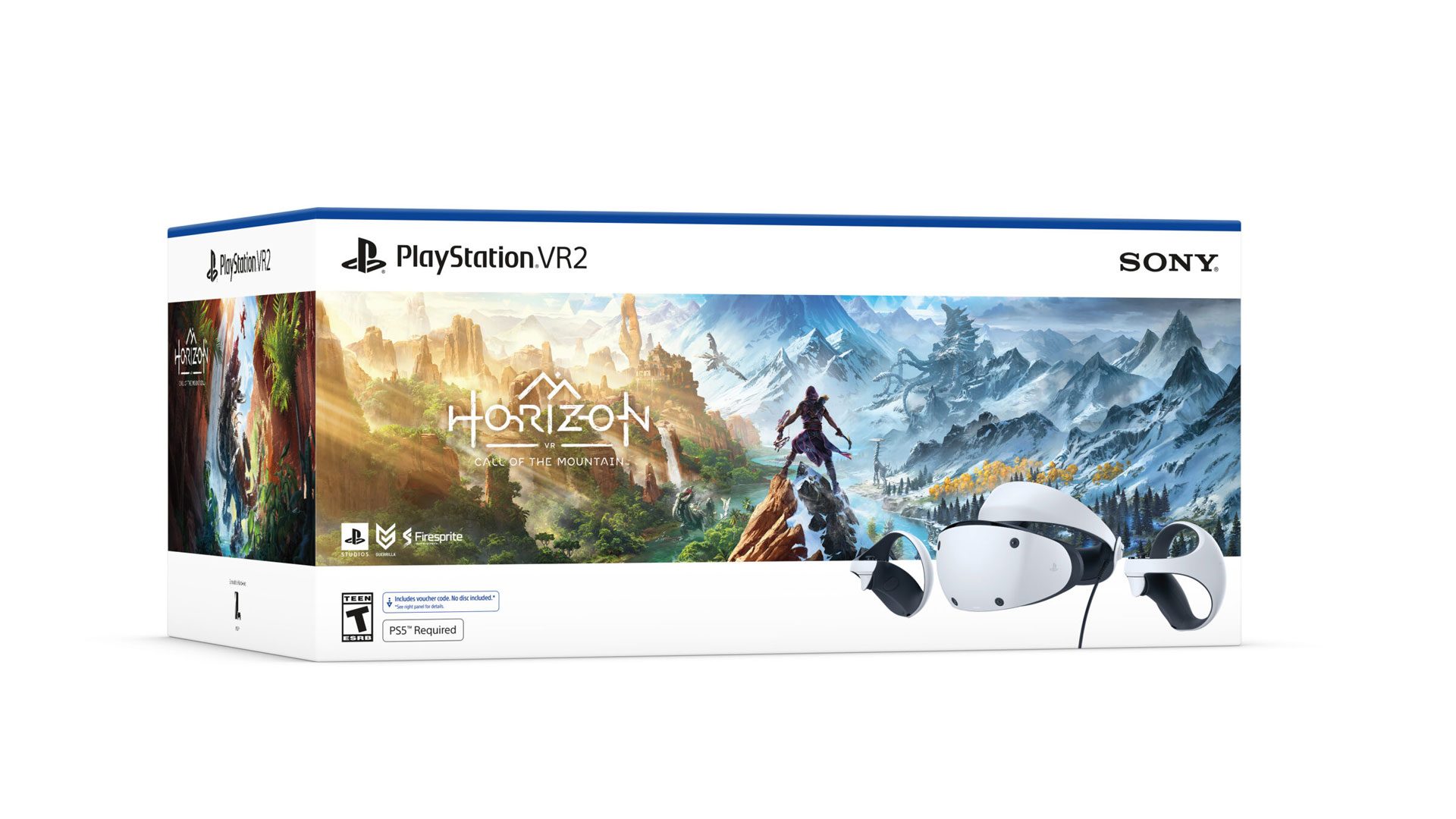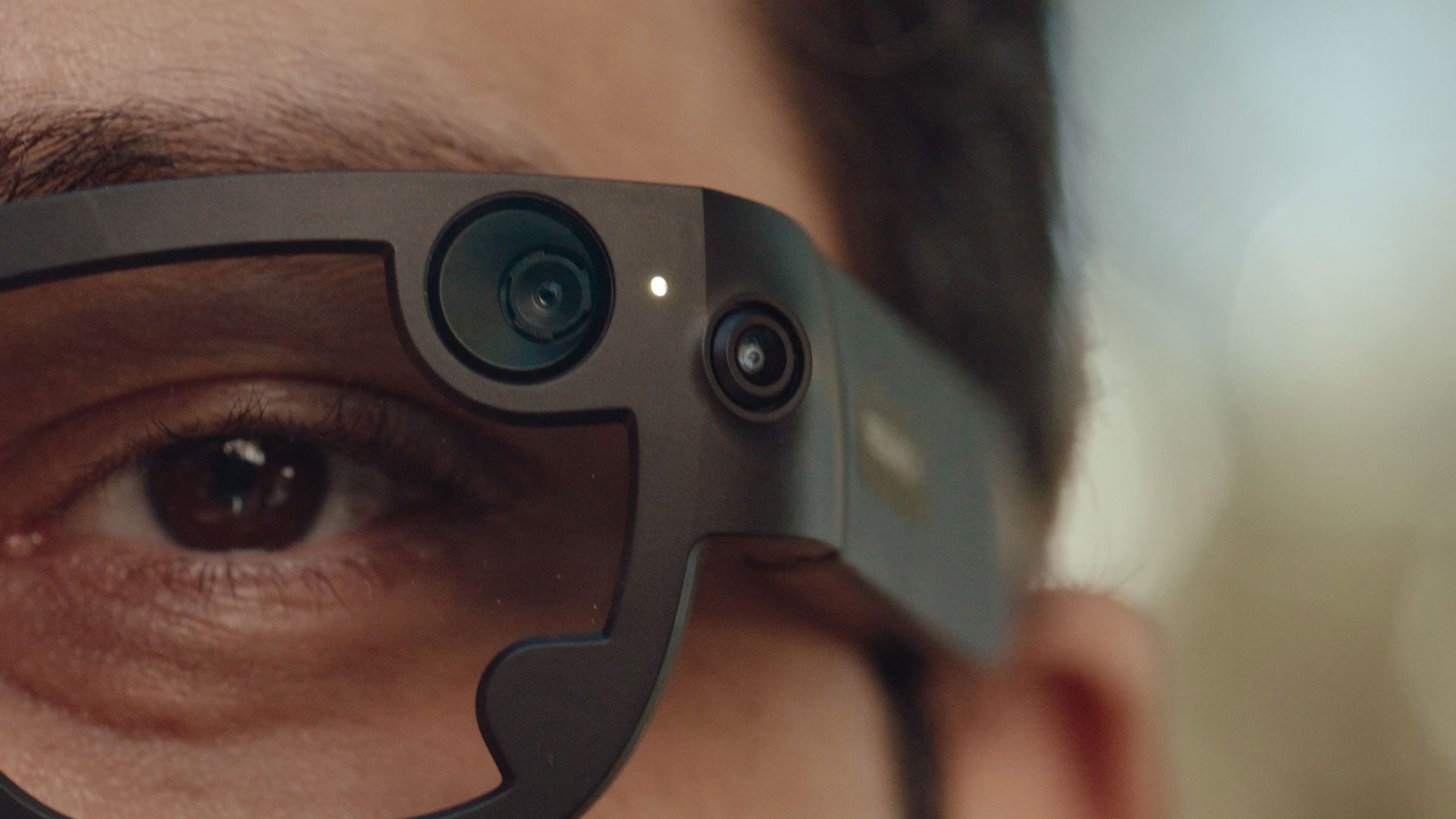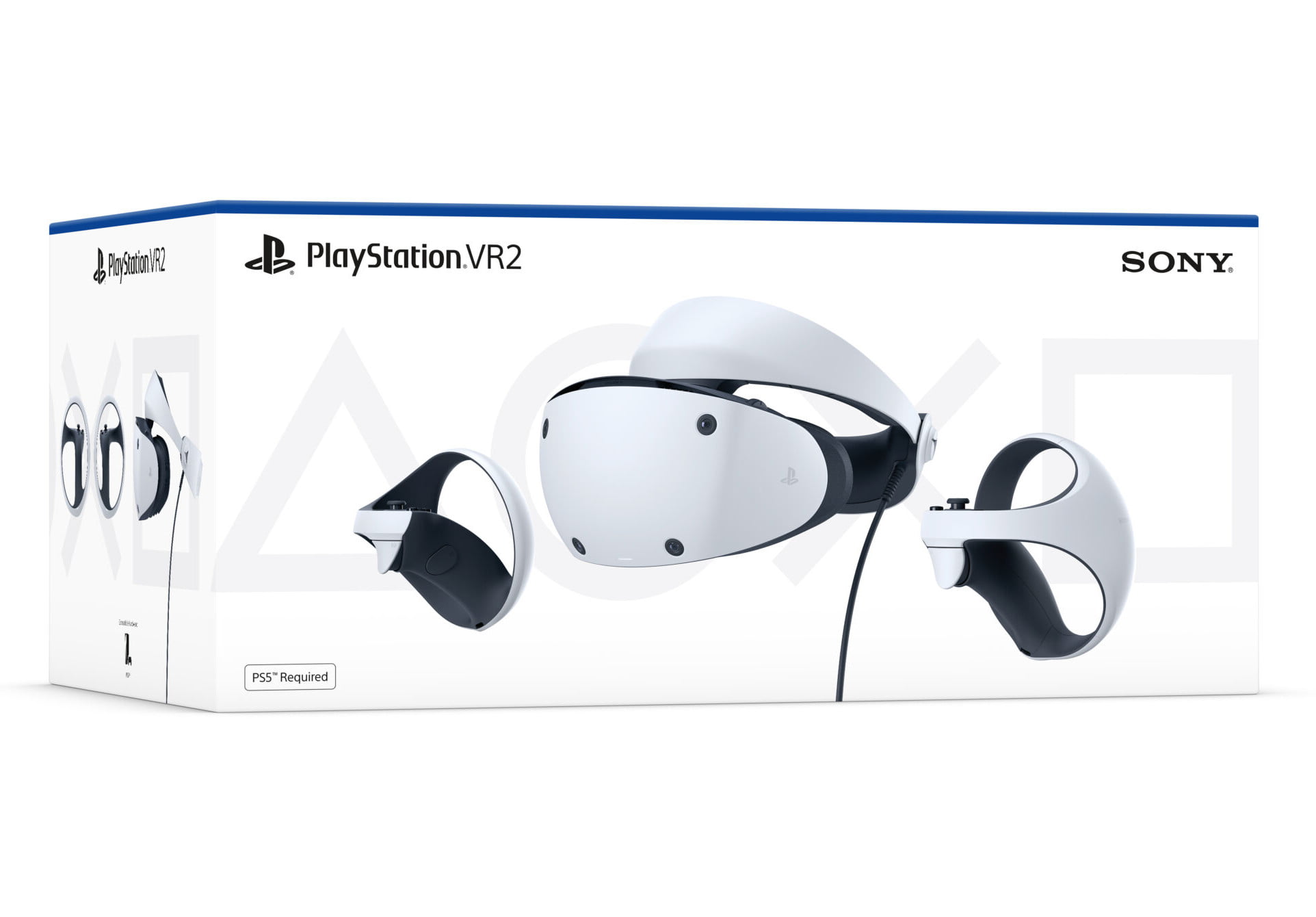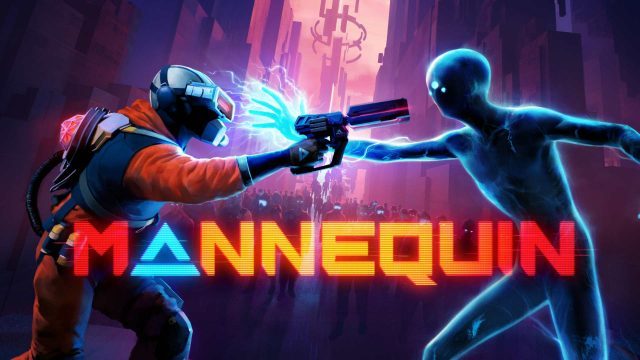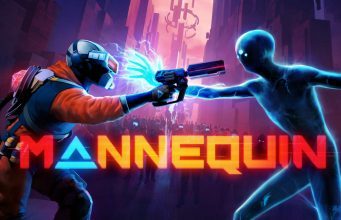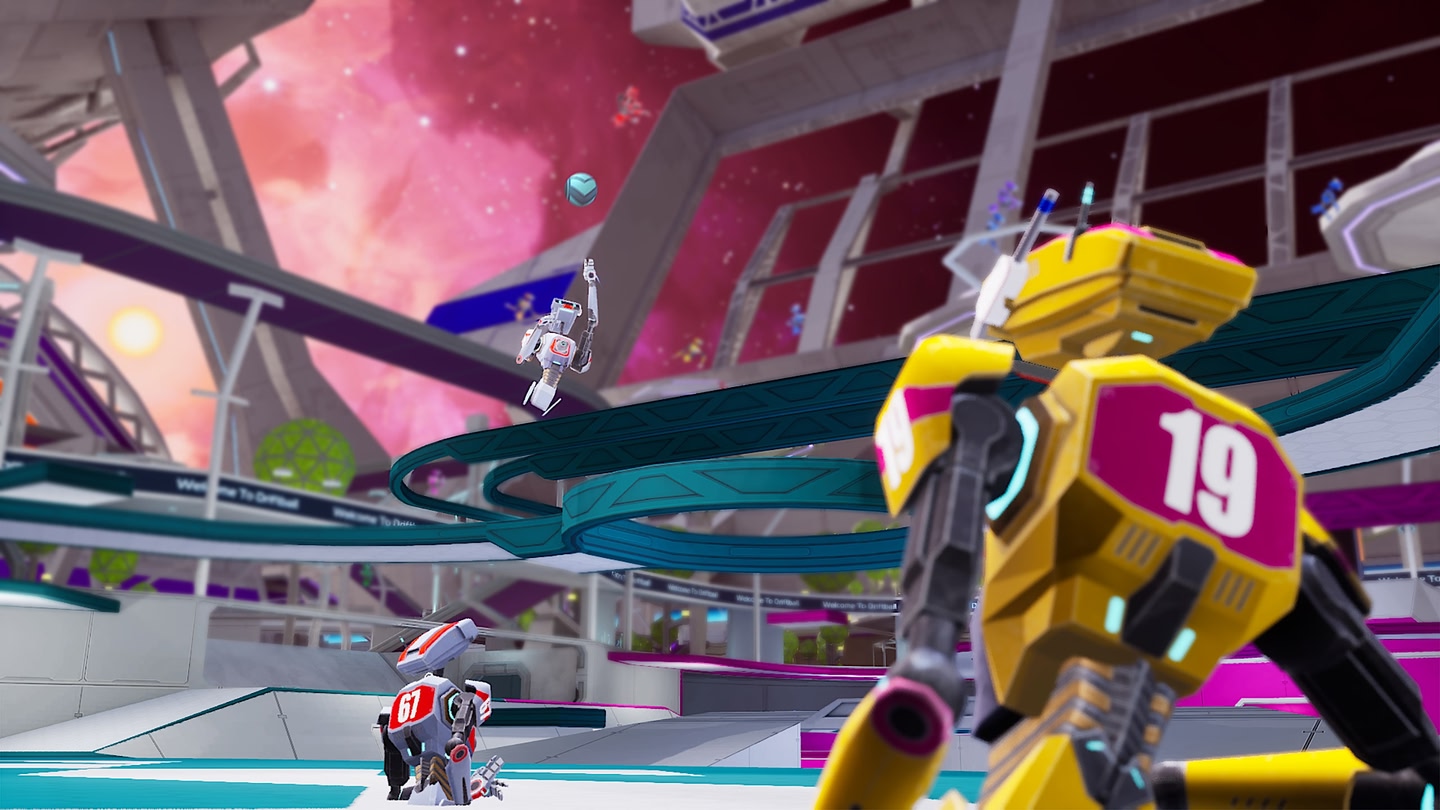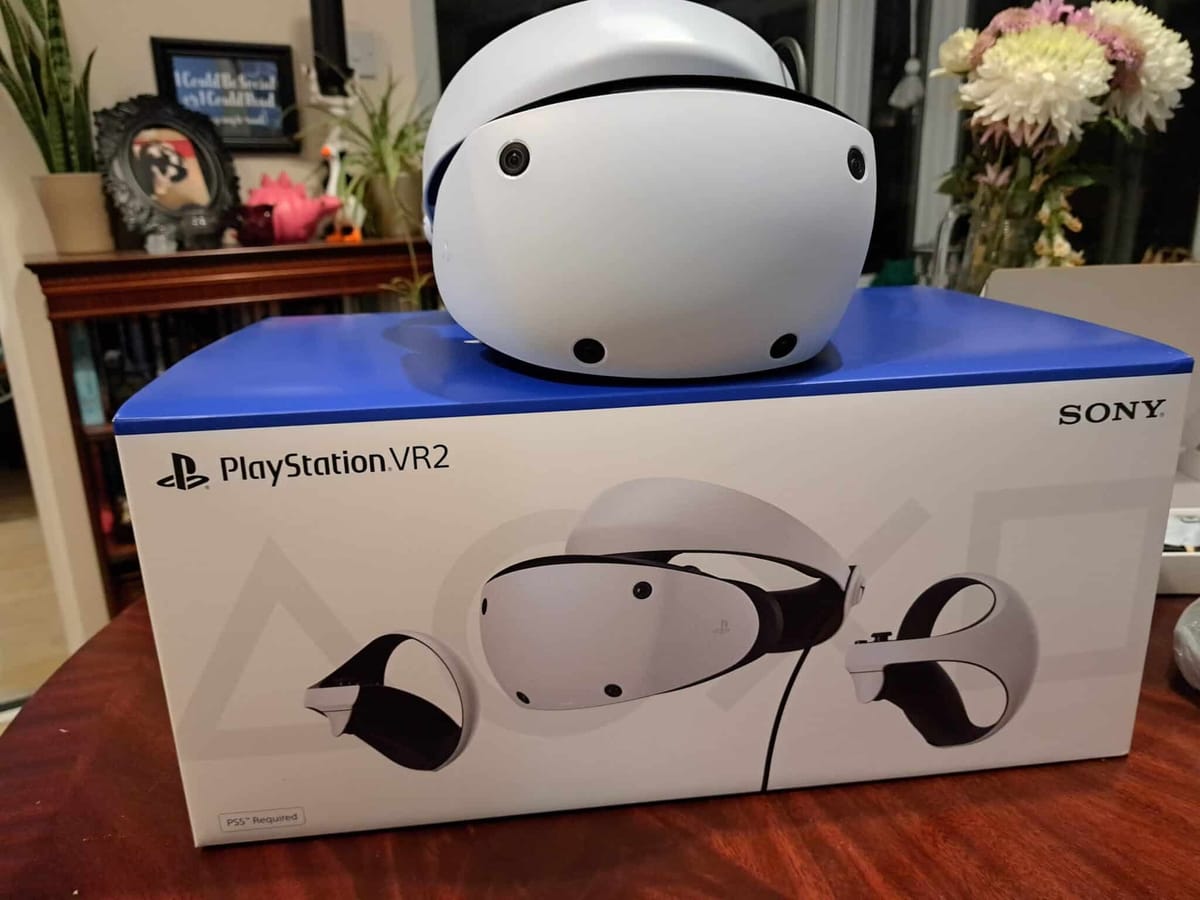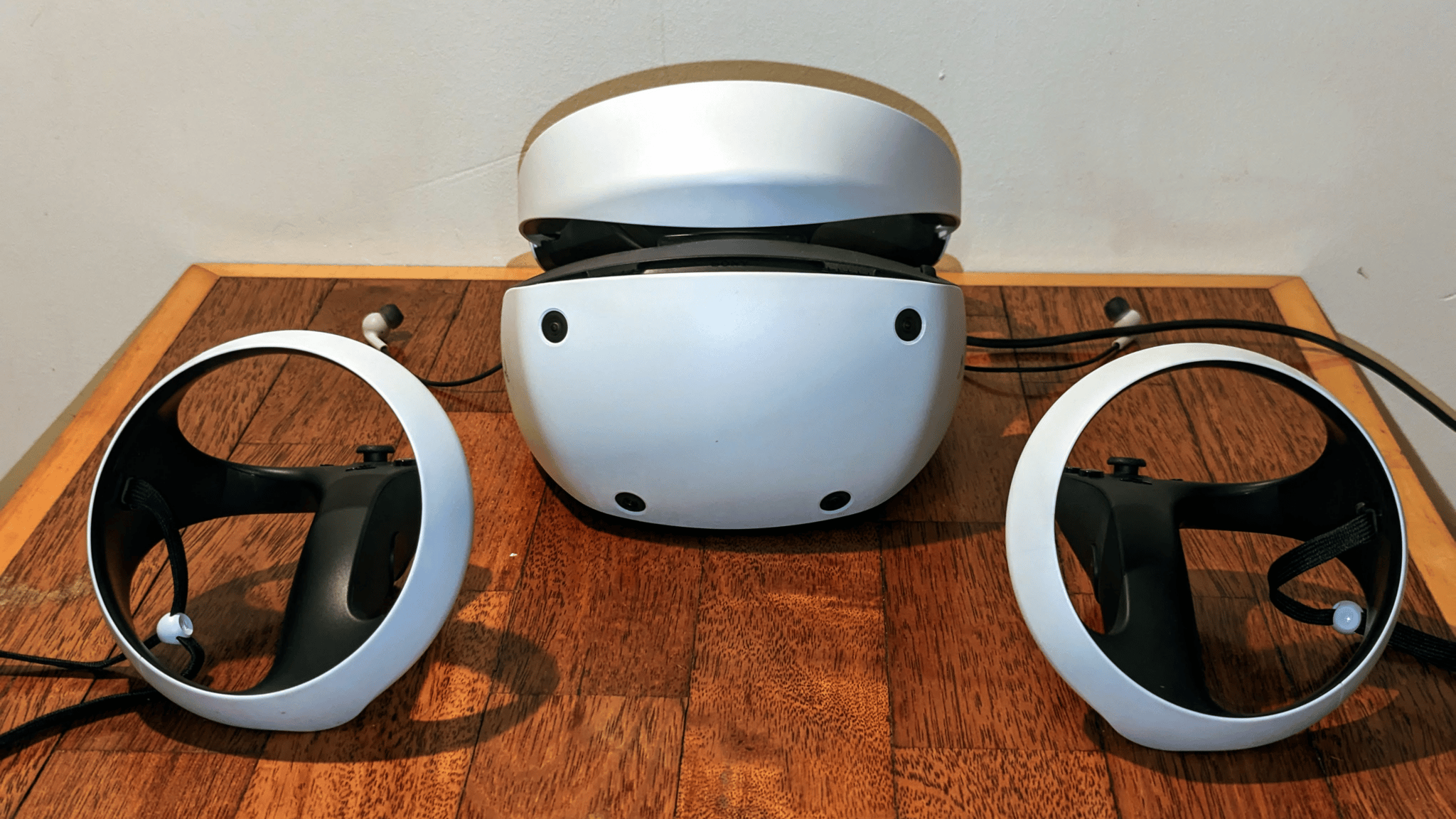Retronika Review-In-Progress: A Bumpy Ride
Retronika is a frustrating title. This isn’t a game riddled with poor design choices, but in its current early access state, it needs major balance and tuning adjustments to make it worth recommending.
Upon first seeing a trailer, there was a thrill and excitement that sustained itself even upon first launching the game many months later. The promise was simple: a VR single-player racing action game where you control a hoverbike with free movement where you duck, weave, and use laser guns to take out enemies. You’re on a mission to return home from Earth as an alien sucked through a wormhole into our futuristic flying car-infested reality.
It’s an ambitious game, but Netherlands-based 4Players-Studio recognizes the need to ease players into Retronika’s world slowly. The controls aim to mimic using a real motorbike, albeit with an airborne twist. Holding your arms in front of you and gripping the virtual handlebars, moving either analog stick forward sees the bike accelerate, and pulling it back activates the brakes.
Gripping the handlebars using one hand limits movement to the horizontal plane, while keeping both hands on the handlebars introduces full vertical movement. That lets you duck and weave past flying cars in your path by pulling up or pushing down on the handlebars to go up or down respectively. This is the most difficult thing to get used to, but early missions only allow for horizontal steering until you get used to proceedings before adding full freedom of movement. Even then, Retronika holds off with one more mission before introducing guns.
Your guns automatically equip to whatever hand is not gripping the handlebars, pulling the trigger to fire at oncoming drones that wish to impede your progress. The aim from that point is to clear linear challenges that see you zooming through a 3×3 grid populated by other flying cars, which often involve destroying numerous drones or reaching a finish line within a set time limit.
Retronika delivers a strong first impression. This is a visually stunning and immersive title in VR, eschewing realism for simplistic cel-shaded models of a city that feels alive far beyond your limited racing perspective. A plethora of cars populate your racing line but even beyond that, you can witness trains zooming by, skyscrapers towering above the clouds and away from your flight level, delivery speeders rushing off-camera from the side of the map. In the early levels, I can drive unimpeded through the tracks to get used to the controls; I can relish the world and imagine the stories of the commuting office workers and families I will never meet but can easily picture inside my mind.
It takes just a few missions for this joy to fade into frustration. In each level, you have a limited health bar that drains not just from taking damage from enemy drones but driving into cars in your track or even firing a bullet. If you accidentally fall outside the narrow 3×3 racing grid, your health drains rapidly until returning to the playfield. Even if you can save yourself from failure, you’ll likely do so only after losing at least 50% of your health.
Balance is an area in which Retronika is sorely lacking. While creating a sense of life across your environments is admirable, cars are almost too prevalent in your racing line. Up to 9 vehicles can fill each of the squares of the 3×3 grid that makes up your racing field, and at times it’s like a freeway at rush hour, the way only one space will actually be clear of congestion. Theoretically, there’s little issue with this and forcing player awareness to find the gap, but cars move without any seeming logic or prior warning. There’s no fun in finding an open space to then be barged out the way by a car swerving from above or below, which inflicts damage or, worse, pushes you out of the driving area altogether.
The enemy drones are somehow even worse. These will fly behind you and begin firing almost immediately, often getting in one or two hits on your precious health before they even enter firing range. They rarely miss, and even when switching guns, your own firing speed is too slow or power too weak to defeat an enemy without inevitably losing health. Your only way to avoid this is to interrupt the flow of play to completely stop moving, taking both hands off the handlebars to fire using both guns. That leaves you a sitting duck for bullets or NPC drivers so reckless they should lose their license.
If multiple drones appear, forget about ending the fight with the same amount of health you started with. When stronger white drones appear, you may as well flip a coin on your odds of success. The difference between victory and defeat never feels like skill, merely chance. However, levels are often so gruelingly long that defeat will force you to restart a level, and you often lose multiple minutes of progress. Fail it more than a few times, and the hope slowly fades as you waste time retrying the same sections to reach those awkward pain points.
In theory, you can counter such challenges by upgrading your bike and weapons. Completing levels rewards you with an in-game currency to buy new weapons or improve your bike. Upgrading your radiator improves braking, the turbine increases your maximum speed, the exhaust improves acceleration, the handlebar improves steering, air intake for speed, fuel intake… wait, that also does speed. The air intake’s promise to help you ‘hit max speed in record time’ sounds more like acceleration despite its label.
Upgrades make little sense, nor do they seem to make discernible changes to your bike’s abilities unless you equip numerous upgrades at once. None of them seem to address the areas I’d most like improvements for, such as health and defense. Despite trailers showing a shield being available, it’s limited to one weapon you can’t unlock until later in the game.
Even then, upgrades are prohibitively expensive. I couldn’t afford a single upgrade through standard progression, which forced me to replay earlier levels and grind for the necessary currency in a way that sucked the joy out of play. It didn’t take long until revisiting Retronika for review began feeling like a chore, far from the initial flutters of excitement I once felt.
Retronika Review-in-Progress – Current Final Verdict
Retronika is not unsalvageable. This game is in early access, and the gameplay fundamentals are there. Driving is responsive, it’s visually strong, and there are 50 missions and a suite of weapons that offer the necessary variety. That is, if the balance gets adjusted. Difficulty options are a first step, but changes to NPC vehicle behavior, drone accuracy, health recovery, and defense are needed irrespective of difficulty. Retronika currently goes from a pleasant to a punishingly difficult and annoying experience before clearing more than 10 missions.
Can these issues be fixed? The team notes in its Discord server that Retronika is close to the end of its early access period, suggesting little more in terms of balance changes will be made before the full release. I hope that’s not the case. There is a fun game hiding in here, and this isn’t a game needing some mechanical overhaul to make it work. However, major balance fixes are required to meet that potential.
For a game promising to fulfill the wonder-like fantasy of riding a hoverbike through a bustling city, it just isn’t fun. And that’s a real shame.






